Words and pictures: James Walshe
.jpg?auto=format&w=1440&q=80)
A devastated Ypres was completely rebuild after war ended in 1918.
I’m under an umbrella in a drizzly autumn dawn, staring across the dank grey mist-soaked fields of Flanders. Waves of unexplainable emotion wash over me as I imagine ghostly figures trudging across this bleak landscape and disappearing into the fog. This is it. That place. The one we have all read about. From this point, from 1914 to 1918, a fortified line of filthy trenches, dug-outs and barbed wire cut a meandering wound in the landscape, 440 miles south to the Swiss frontier: This is the Western Front.
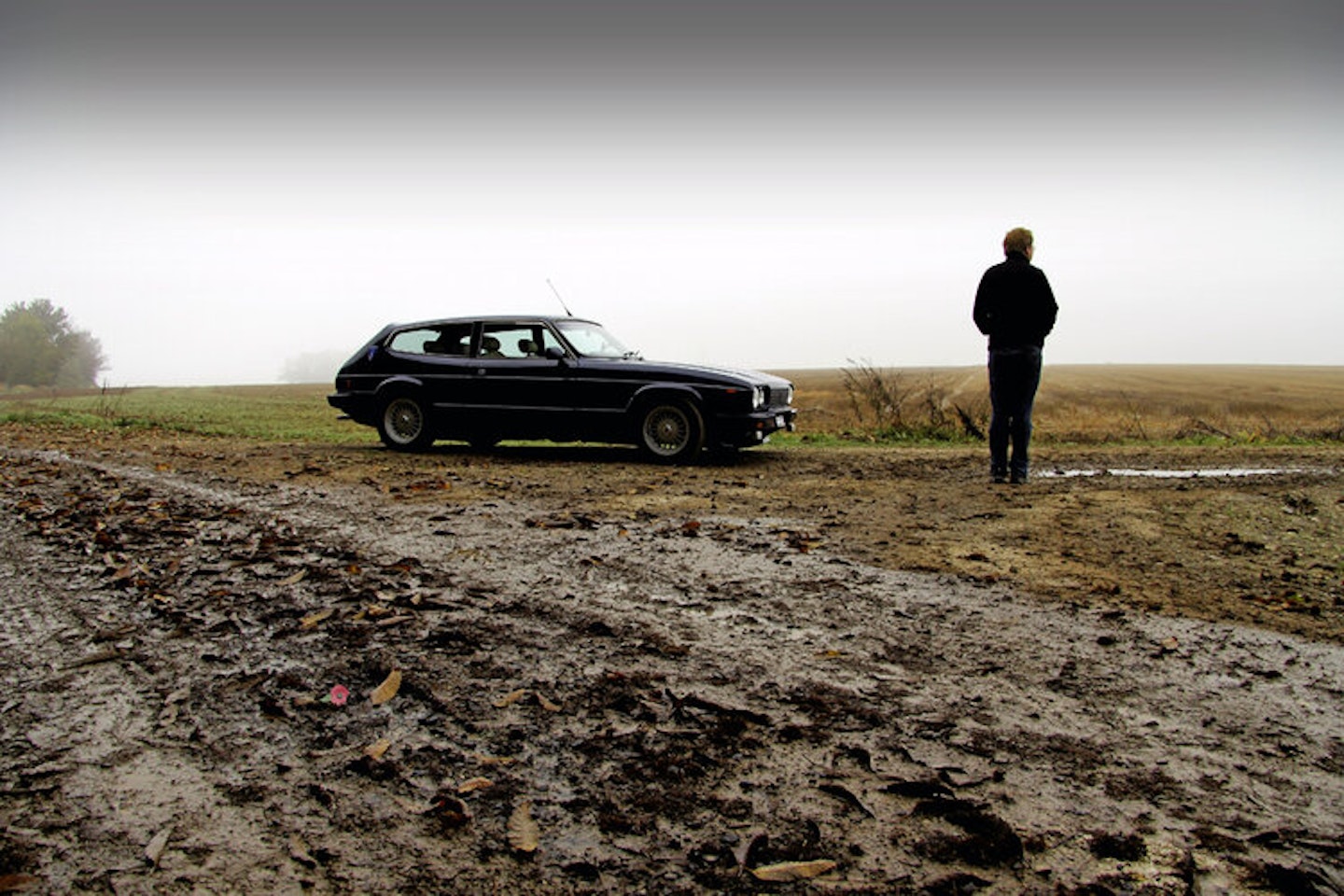
High Wood, The Somme. James contemplates.
I set off earlier in the dark from the Belgian coastal town of Nieuwpoort, the northernmost point of the trench-line and the place where the infamous ‘Race to the Sea’ concluded in 1914. From that point onwards, the muddy mess would begin. I have my own journey to do – and it’s one of discovery. My task is to drive the entire Western Front in less than two days and see where many of the fighting took place and to do so, I’ve chosen a Scimitar - and arguably the finest of the breed. This particular Middlebridge Scimitar is a particularly fine example too, carefully restored by its Swiss owner Louis Guigoz to meet the strictest standards of roadworthiness in a country notoriously hostile towards classic cars.
What with those strict emissions laws in Switzerland, Louis installed a cleaner replacement Scorpio engine in place of the original so he could more easily import the car – a process which still took four long years. The endless pile of required paperwork and patience demonstrates Louis’ commitment to the car: ‘I saw one many years ago on Putney Bridge during a period I spent working in London’ he says. ‘I knew then, that one day I must own a Scimitar’. His car was brought to the UK for a show organised by the Middlebridge Club’s Mick Gaughran but the time had come to drop it back to Louis - and so gladly I took the keys from Mick.
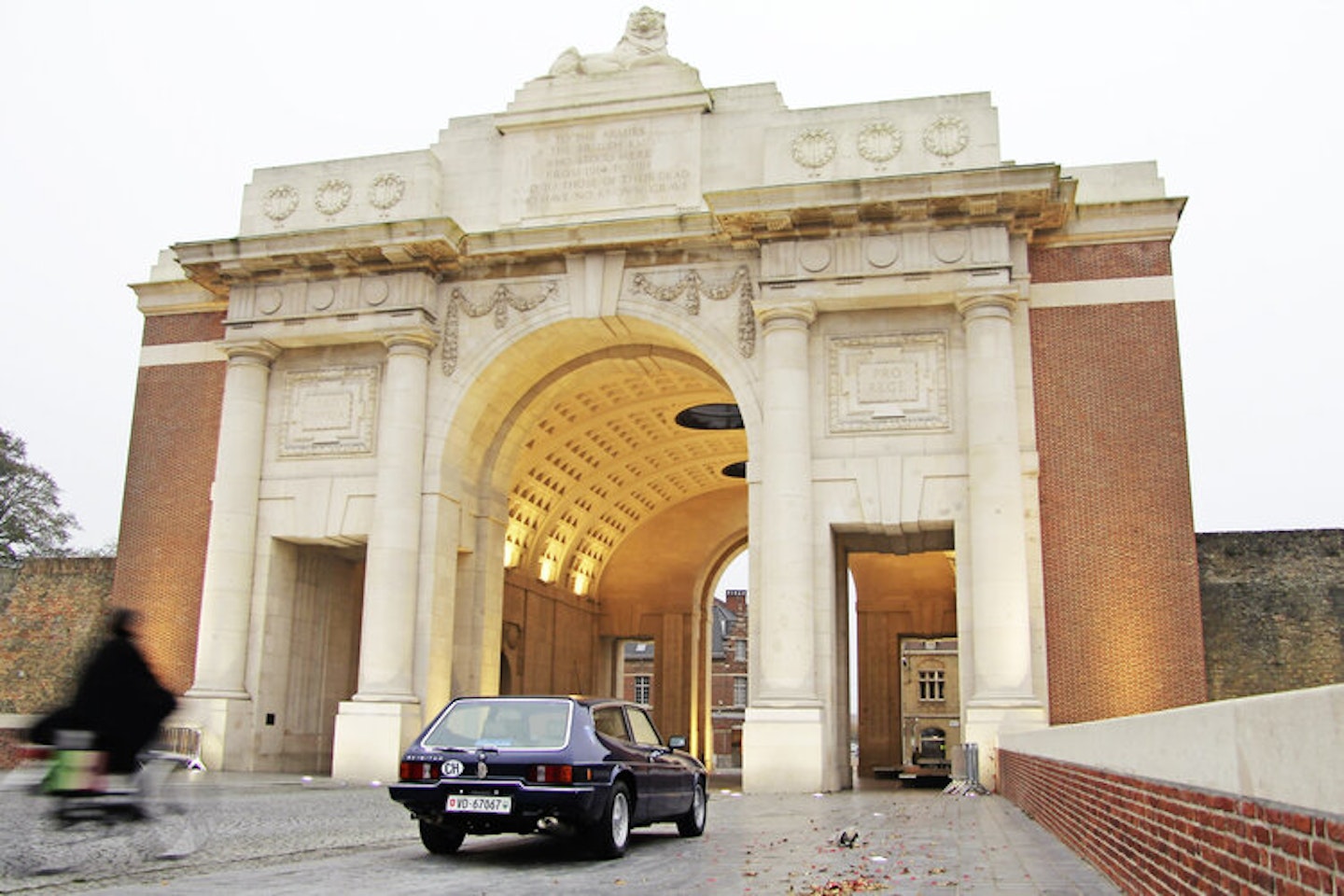
At the impressive Menin Gate, Ypres.
With the trip underway, my first target is Ypres. The town stood right in the path of Germany’s plan to sweep through Passchendaele, across into France and then encircle Paris. But the allied forces kept them out and everybody dug in for the next few years. I park up outside the Menin Gate, a memorial inscribed with the names of almost 55,000 Commonwealth soldiers who fought nearby and whose bodies were never found. It’s a sobering start to the trip, tempered by some breakfast in the long-since rebuilt streets.
The Middlebridge attracts much attention. Styled by Tom Karen of Ogle Design in the 1960s, this iconic shape first appeared at the 1968 Motor Show. It is as practical as it is pretty. Despite still having thirty or so orders on the books, Reliant ended Tamworth production on a high in 1986 with the 2.8-litre Cologne V6 under the bonnet and a bunch of improvements including better brakes and suspension.

But the ‘ultimate’ Scimitar had yet to surface. When it did, two years later, the Middlebridge Scimitar emerged from a factory in Nottingham with more than four-hundred modifications including a 150bhp 2.9-litre version of the Cologne with fuel injection and a five speed Ford T9 gearbox. It was a well-sorted car which - as expected - came with a Royal seal of approval: Well known Scimitar fan Princess Anne bagged herself car number five. Alas, sales didn’t hit target and Middlebridge went into receivership in 1990 after selling just 77 units. I am in car number 29, a Jaguar Navy Blue model which Louis has gently fettled to his satisfaction.
The original velour seats were replaced with leather and they’re turning out be immensely comfortable on this trip. You sit low behind the wheel and it feels snug but there’s more than enough space to relax. Any minor squeaks from the cabin plastics are drowned out by the rumble of that engine as the spires of Ypres vanish into the mist behind me and I cut through the Ypres salient towards The Somme. I’ve been here in summer and in the sunshine, the landscape is a tapestry of green and golden fields spread far out to the horizon, beneath vast and beautiful skies. But right now, in the depths of winter, the sodden mud is shrouded in a thick blanket of grey mist. I shudder as I imagine what hell it must have been, to sit for months here in water-filled trenches, the sporadic crackle of machine gun fire, bullets rattling into the barbed wire just above the parapet.

I join the autoroute for a while and note the composure of the Middlebridge. There’s a quiet whistle of wind outside and a pleasant grumble from the Cologne V6 under that long bonnet as the miles sweep by. I cross Vimy Ridge and drop into the vast sweep of soggy green terrain below, peppered by numerous well-kept cemeteries marking the Battle of The Somme and stop at one.
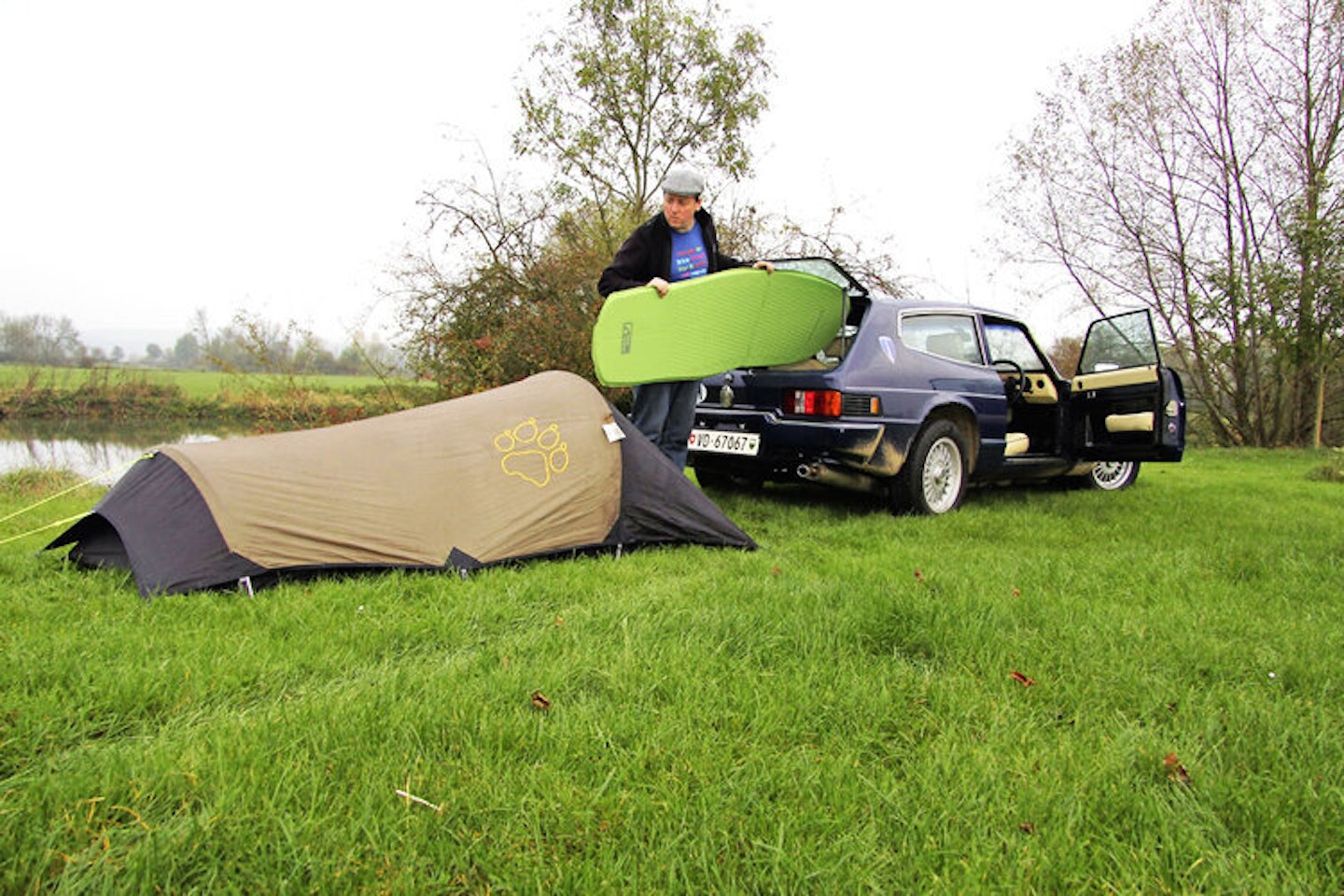
Scimitar makes a surprisingly useful camper.
A cold breeze slices through the branches of some nearby trees and there’s the distant sound of a tractor. The clear-up operation after the war was extensive but farmers are still turning up items in these fields in a tangle of tree roots, bones and rusty bombs. There’s still danger too, particularly in the form of unexploded chemical shells. During the battles, these would land near trenches with a dull splash and at first, went largely unnoticed by most of the troops until the lethal gas was released.
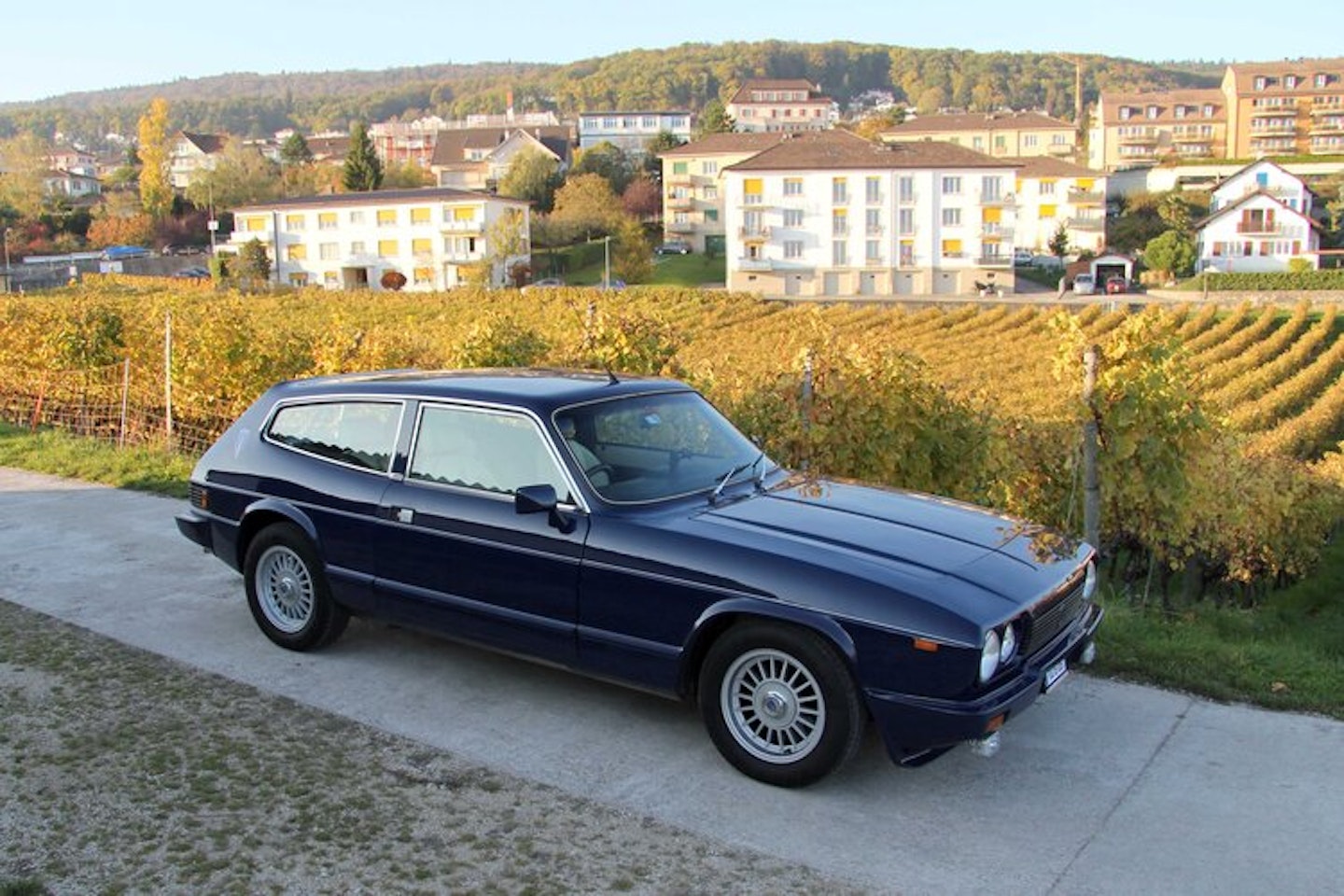
Mind heavy with somewhat dismal visions, my right foot becomes heavier as I thunder south, further into France. I need to make Verdun by dusk because – at the befuddlement of my colleagues back home – I have decided to fill the Scimitar’s big boot with camping gear and pitch my tent for the night. I fall asleep, rain lashing against canvas and wake next day to a silent, drizzly morning, dawn breaking through fog hanging over the River Meuse. Discreetly, I shove the wet canvas into its bag, quietly shut the door and turn the key carefully as if hoping the car will start more quietly that way. It doesn’t. There’s an explosion of 150 horses and I rumble off site as curtains twitch wildly through the rain-soaked caravan windows.
After a brief wander around poignant monuments to the heroic French fight for the city Verdun, it feels comforting to be back in the Scimitar’s cosy cockpit. Within hours I’ve pounded my way south by some distance, winding my way up into the spectacular Massifs des Vosges, now basking in bright sunshine.
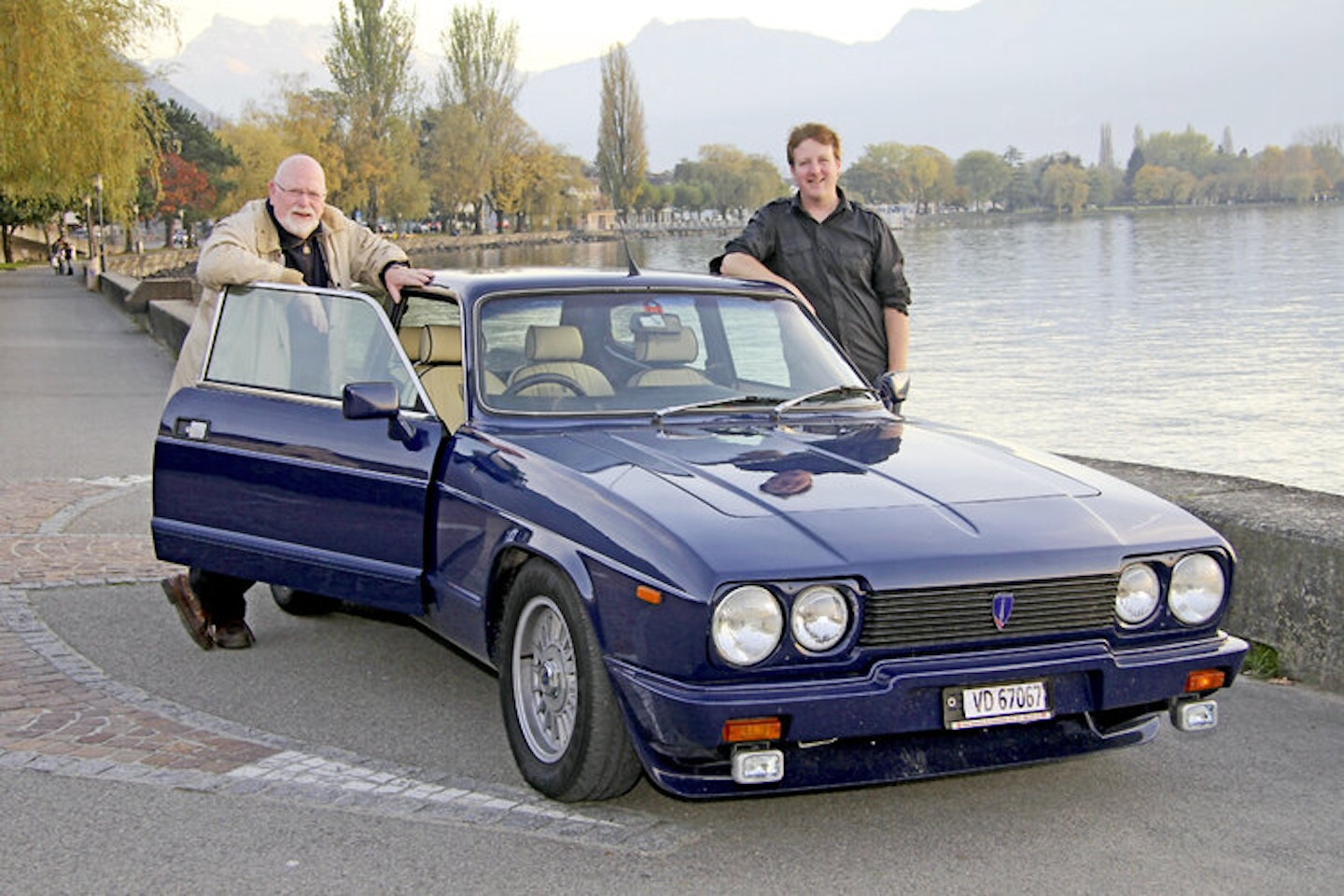
James reunites owner Louis with his Scimitar.
More vigorous tugs at the wheel sends the car darting through thick forest and past steep-sided peaks, where both French and German troops hacked trenches into the granite landscape and remained stuck in stalemate from 1915 onwards. This is no Lotus but as the bright sunlight slices through the trees, lighting up the golden mountains all around I descend into the foothills of the southern side with a huge grin on my face and the German border just a few miles away.
In the village of Joncherey – just short of my target - I find one last official monument which instead of detailing thousands of soldiers, pays tribute to just one man. Local teacher Jules-Andre Peugeot was called up for compulsory military service in 1913 and on the morning of August 2nd 1914 – the day before war was declared – went to investigate reports of some German troops crossing the nearby border. He ordered them to leave immediately but Lance Corporal Peugeot was shot and died minutes later on the steps of a nearby house. He was the first soldier to die in a war that was to claim nine million. And then it’s over. A few miles away at the Borne des Toise Puissances (the site of the 19th century border of France, Germany and Switzerland), I rest on a tree stump at the very southern edge of the Western Front trenches, listening to the wind in trees above nearby shell-holes and craters now overgrown with brambles.

A few hours later, I’m handing over the keys to a beaming Louis, who is thrilled to have his car back. He and wife Josette reward me with wonderfully warm hospitality and a tour of the area (in the Middlebridge, of course) before I depart for the airport. My journey in the Scimitar has been enjoyable but humbling, through terrain of huge historical significance in steps taken by courageous men, whose footprints will never be forgotten.
.jpg?ar=16%3A9&fit=crop&crop=top&auto=format&w=1440&q=80)